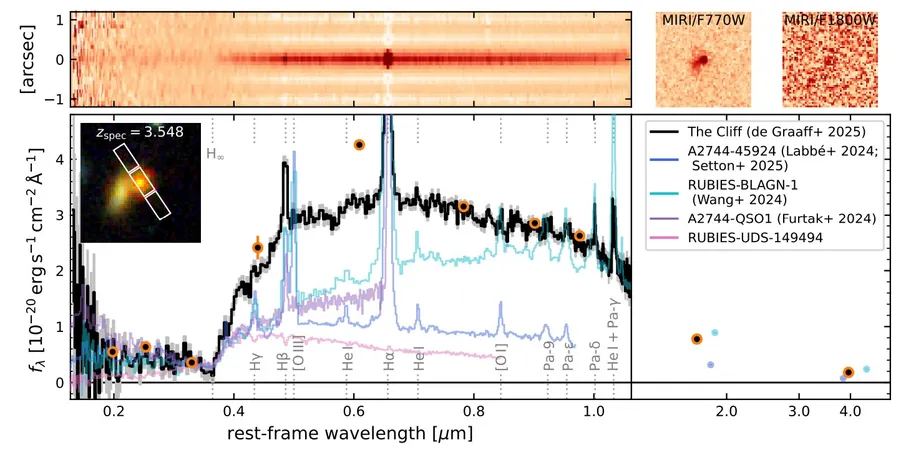
Unlocking the Ocean: Profound Discovery Could Yield Billions in Green Hydrogen
2025-09-20
Author: William
A Deep-Sea Breakthrough Like No Other
In an astounding development, scientists aboard the submersible Fendouzhe have unveiled a groundbreaking discovery deep beneath the Pacific Ocean. Located over 3,000 meters below the surface, researchers found vast hydrogen-producing structures that stand to fundamentally change our understanding of renewable energy sources.
Meet the Kunlun: Nature's Hydrogen Factory
Dubbed Kunlun—after the revered mountain range in Chinese lore—this hydrothermal field functions as a colossal natural hydrogen factory, quietly operating for millions of years beneath hundreds of meters of seawater. Unlike traditional surface mining, these underwater formations produce hydrogen through intricate geological processes.
Gigantic Hydrogen Reservoirs Await
Spanning an area akin to a large city, the Kunlun site boasts around twenty significant depressions scattered across the ocean floor. Many of these crater-like formations exceed a kilometer in diameter and reach depths of 130 meters capped by seafloor sediment.
Using state-of-the-art spectrometers, scientists detected impressive hydrogen concentrations ranging from 5.9 to 6.8 millimoles per kilogram of hydrothermal fluid. Accounting for flow rates and surface area, it's estimated that this remarkable site produces around 500 billion moles of hydrogen annually—translating to approximately 1.008 million tons of green hydrogen every year, or about 5% of the global underwater hydrogen output.
A Billion-Dollar Opportunity for Clean Energy
The economic potential of this natural hydrogen production is staggering. At today’s market prices for green hydrogen, Kunlun could generate an astounding €5.04 billion each year. But the implications go far beyond mere dollar signs; this discovery also sheds light on the primordial energy systems of Earth.
Exotic Life Forms Thriving in the Abyss
Beneath the surface, the Kunlun site teems with a fascinating chemosynthetic ecosystem, defying conventional wisdom about life in extreme conditions. Unlike ecosystems reliant on sunlight, these deep-sea inhabitants flourish by tapping directly into chemical processes that involve hydrogen and minerals.
Among the extraordinary life forms documented are translucent shrimp navigating the mineral-laden waters, sea anemones gripping superheated rock, specialized worms thriving in utter darkness, and bacteria that harness hydrogen for energy. These organisms serve as living laboratories, offering insights into the origins of life on Earth and potential parallels with extraterrestrial life.
Revising Our Geological Understanding
The Kunlun discovery challenges long-held beliefs about hydrogen formation in oceanic environments. Previously thought to be concentrated mainly near mid-ocean ridges, this site showcases a process called serpentinization, where seawater interacts with iron-rich rocks, creating hydrogen gas even far from tectonic boundaries.
This major revelation suggests that our planet harbors more natural hydrogen reserves than scientists had previously estimated, echoing recent findings of hidden lithium deposits valued at $1.5 trillion. Such discoveries highlight the often-overlooked mineral wealth concealed beneath the Earth’s crust.
Towards Sustainable Energy Solutions
The Kunlun hydrogen field heralds a seismic shift in how we perceive renewable energy. Unlike industrial processes that require substantial energy inputs, these natural systems generate hydrogen through ongoing geological activities, presenting a promising path to cleaner energy solutions.
At this pivotal juncture, as governments and industries search for sustainable alternatives to fossil fuels, mining natural hydrogen sources could enhance existing renewable strategies, acting as a vital bridge while we scale solar, wind, and other systems.
Caution Required in Exploration
Researchers emphasize the critical necessity of responsibly exploring these underwater environments. Protecting the unique ecosystems surrounding hydrogen vents is paramount, as disruptions could have significant repercussions for marine biodiversity.
Future research will focus on mapping additional hydrogen-producing sites, understanding geological stability, and developing sustainable technologies for resource utilization. The Kunlun discovery not only illuminates the intricate connections between geology and biology but also invites further investigation into the complex biochemical interactions across various environments.









 Brasil (PT)
Brasil (PT)
 Canada (EN)
Canada (EN)
 Chile (ES)
Chile (ES)
 Česko (CS)
Česko (CS)
 대한민국 (KO)
대한민국 (KO)
 España (ES)
España (ES)
 France (FR)
France (FR)
 Hong Kong (EN)
Hong Kong (EN)
 Italia (IT)
Italia (IT)
 日本 (JA)
日本 (JA)
 Magyarország (HU)
Magyarország (HU)
 Norge (NO)
Norge (NO)
 Polska (PL)
Polska (PL)
 Schweiz (DE)
Schweiz (DE)
 Singapore (EN)
Singapore (EN)
 Sverige (SV)
Sverige (SV)
 Suomi (FI)
Suomi (FI)
 Türkiye (TR)
Türkiye (TR)
 الإمارات العربية المتحدة (AR)
الإمارات العربية المتحدة (AR)